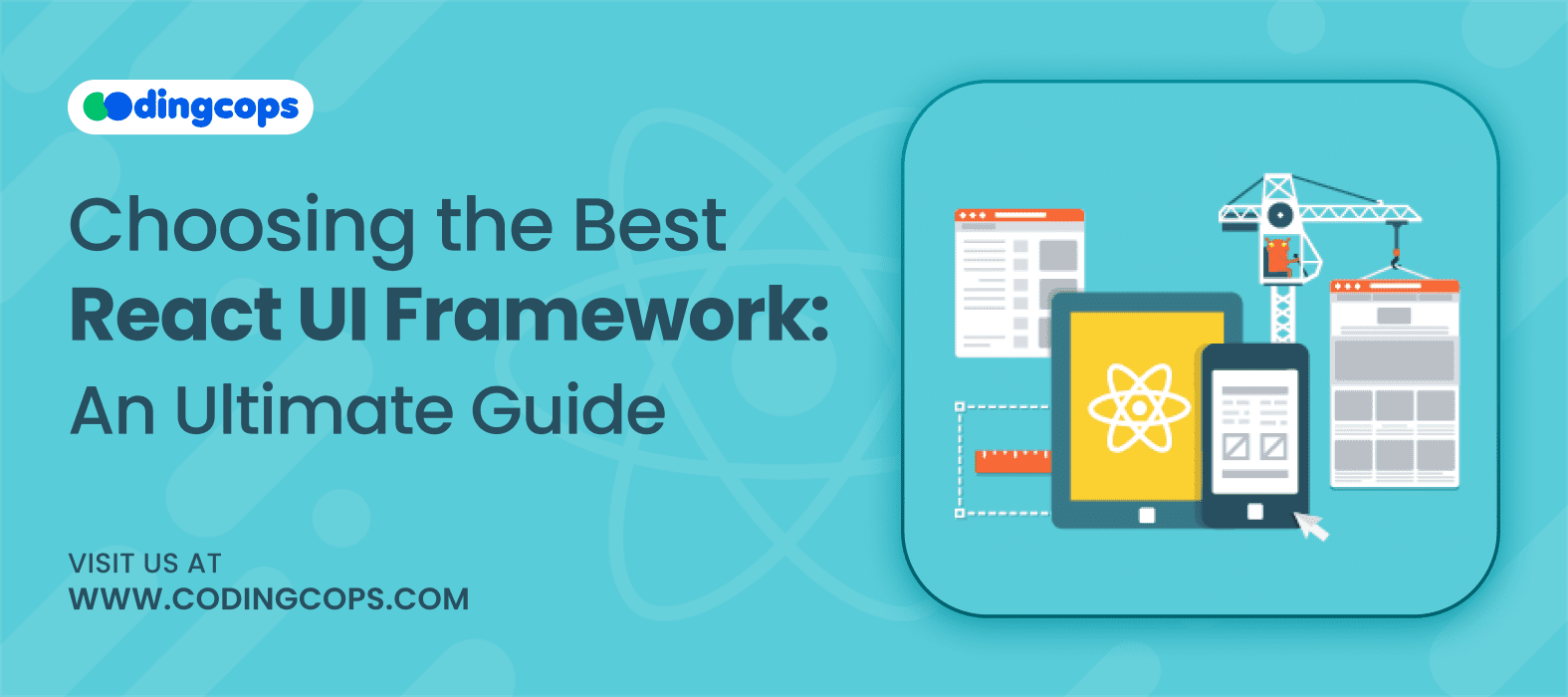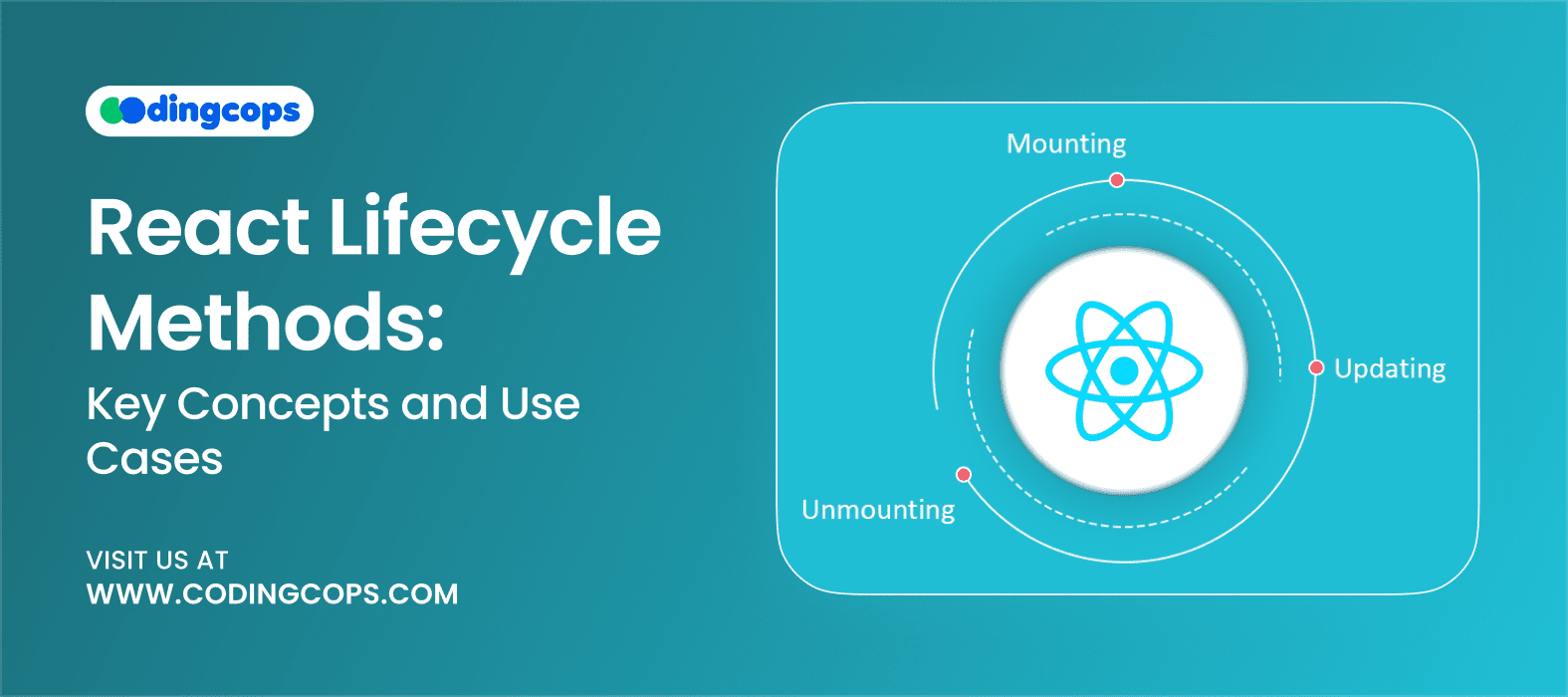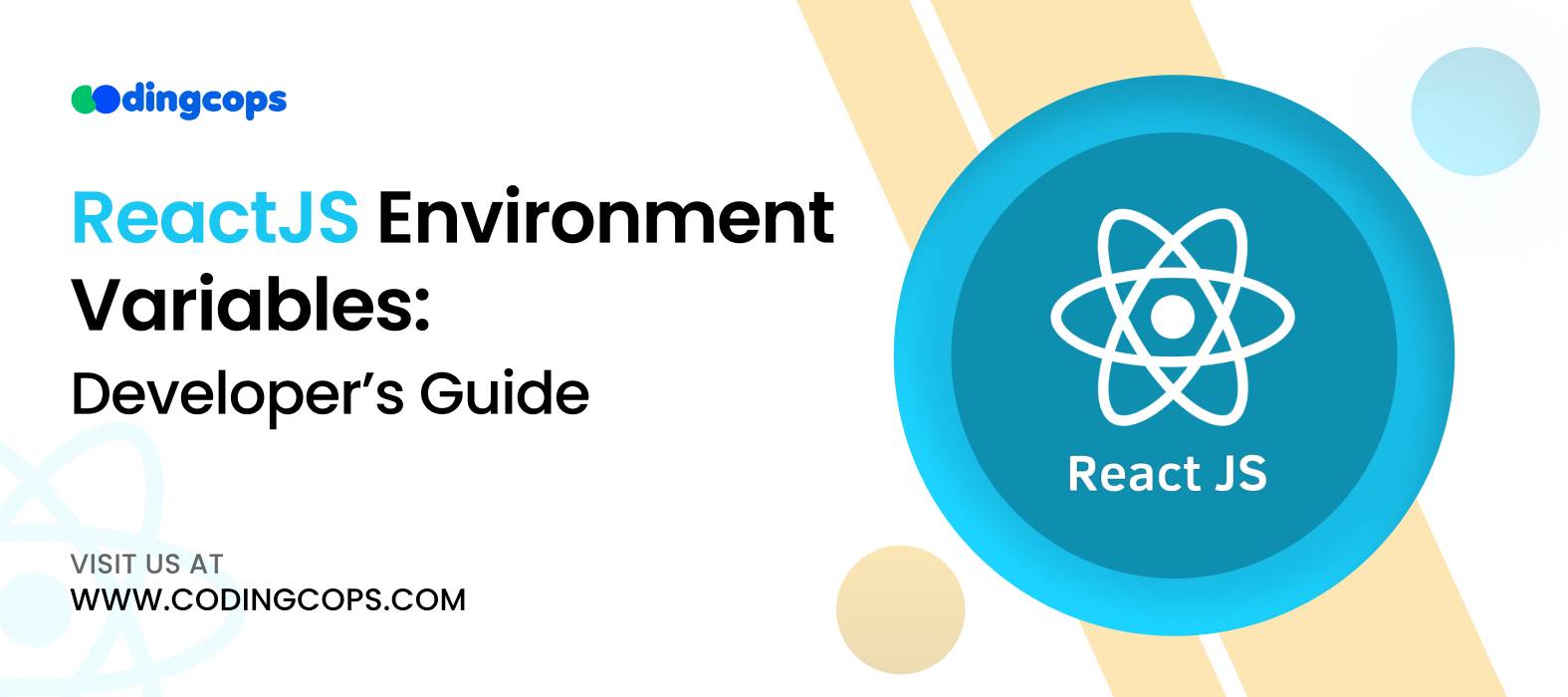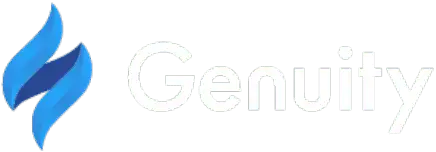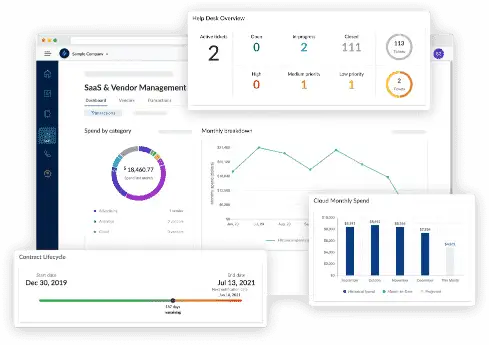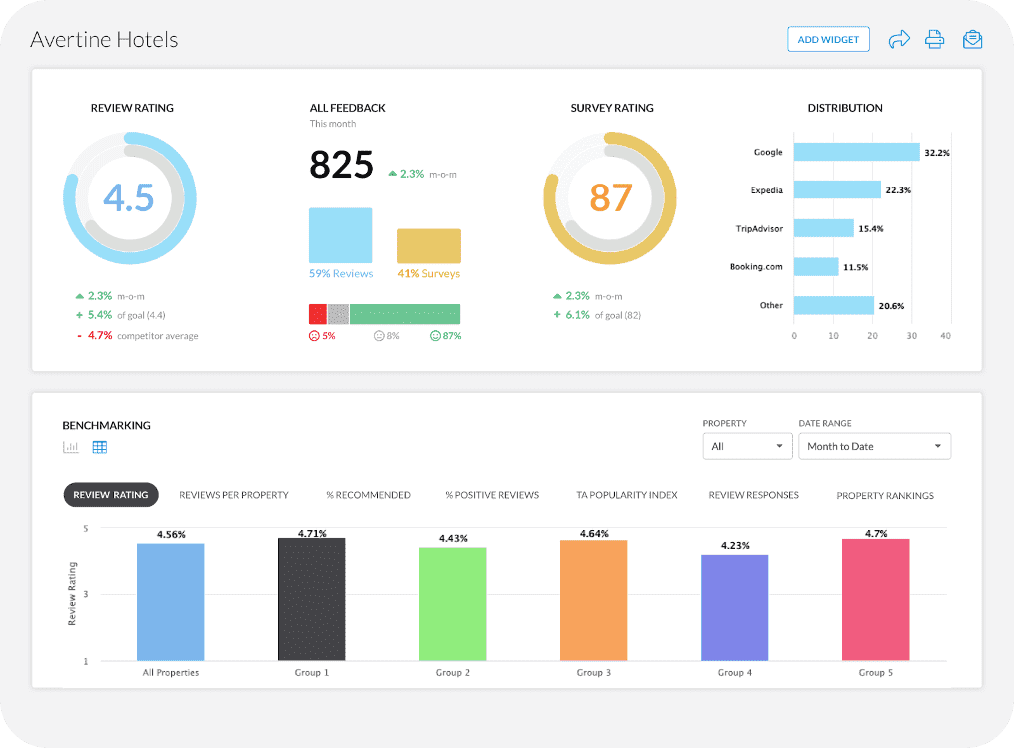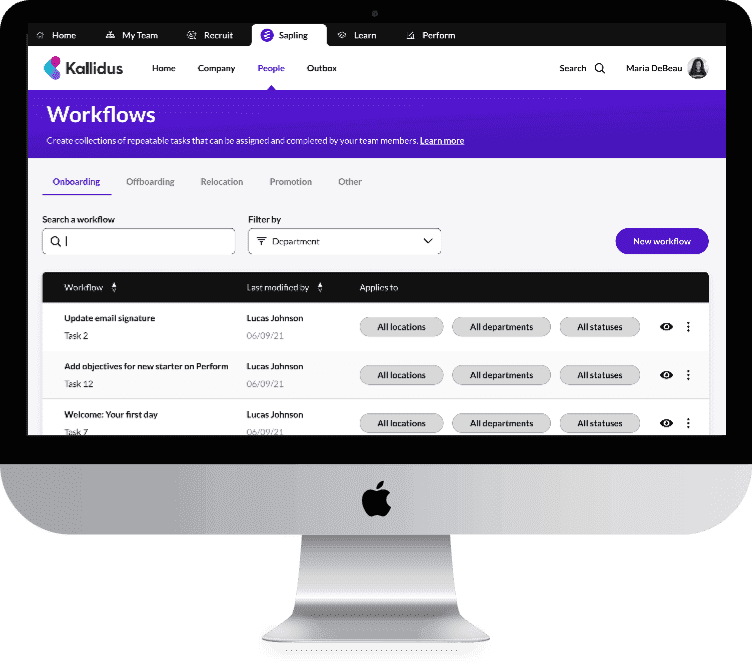Selecting the proper React UI framework can positively affect how you approach and complete your web projects. To begin with, in this blog post, we will take a look at some aspects to pay attention to while choosing a React UI framework to ensure the decision is both rational and effortless.
What is a React UI Framework?
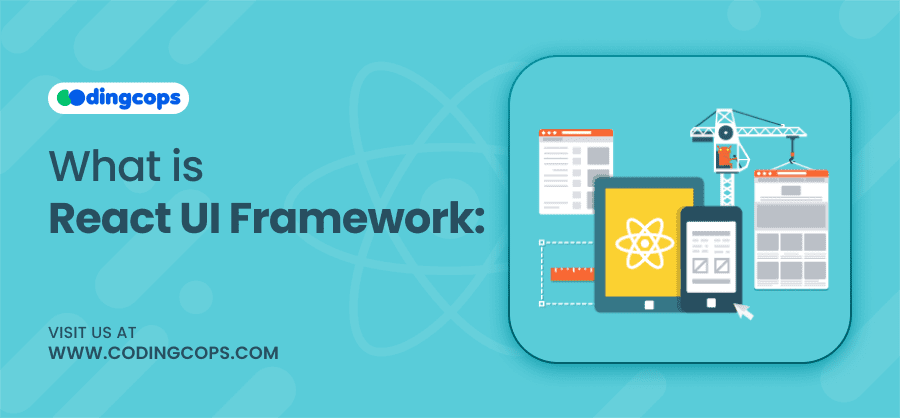
React UI framework involves a series of components that have already been designed and can be used to build the interfaces of the applications in React. It offers buttons, modals, and grids in the form of tools and components that you can adjust and expand as per the needs of your project.
Why Use a React UI Framework?
The primary benefit of using a React UI framework is efficiency. In this way, when you React developers, they do not build every component from scratch which saves time and effort, especially in large-scale objects. Other than that, you get the following benefits from it:
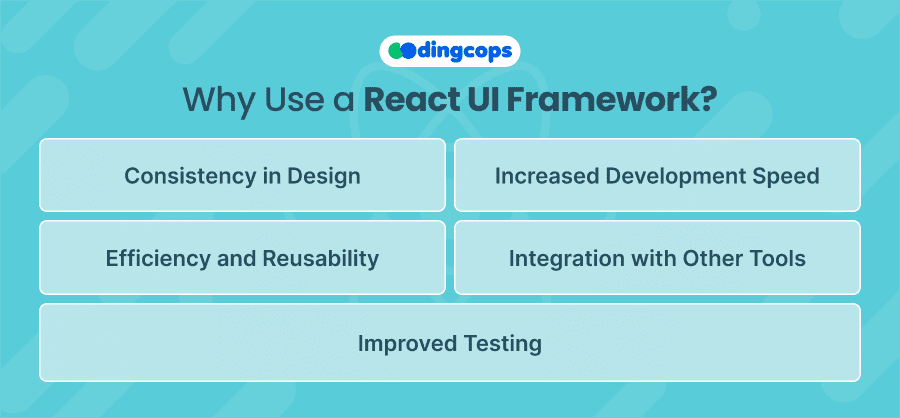
- Consistency in Design
- Ensures uniformity across the application, providing a consistent user experience.
- Eliminates visual differences that could improve the professional look of the application.
- Increased Development Speed
- Accelerates the development process by providing pre-built components such as buttons, modals, and forms.
- For the developers, they can concentrate more on incorporating features instead of having to create standard widgets all over again.
- Efficiency and Reusability
- Promotes the reuse of components, which can be customized and scaled across different application parts.
- Streamlines code maintenance and updates, as changes to a component are propagated wherever it is used.
- Integration with Other Tools
- React UI frameworks often come with easy integrations for state management tools, routing solutions, and more, simplifying the architecture of complex applications.
- Improved Testing
- Components in a UI framework are usually designed to be independent, which makes them easier to test.
- Consistent design and functionality can simplify the process of automated UI testing.
Top Factors to Consider When Choosing a Framework

- Component Variety
Look for a framework with a broad range of components. The more components available, the less likely you are to build additional ones from scratch, which can save development time.
- Customization
The ability to customize components is important. A good framework should allow you to modify styles and behaviors to fit your design without extensive workarounds.
- Community and Support
A strong community and good documentation can significantly ease the development process. Popular frameworks are more likely to have frequent updates, community plugins, and many developers who can provide support.
- Performance
Consider the impact of the framework on performance. Some of the frameworks are more bulky than others and this has an impact on the time it takes to load and the performance levels.
- Compatibility
Ensure the framework is compatible with other tools and libraries you plan to use. It should integrate seamlessly with your project’s technology stack.
Popular React UI Frameworks
Now that we know what to look for, let’s compare some of the most popular React UI frameworks available today.
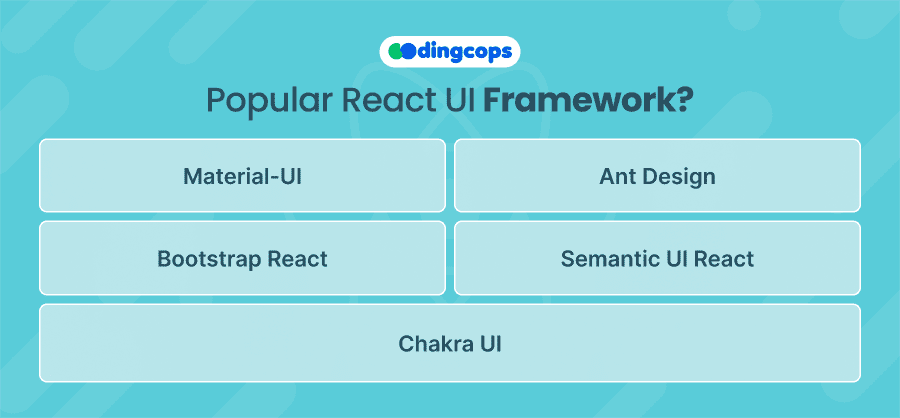
- Material-UI
Inspired by Google’s Material Design, Material-UI is one of the most popular React UI frameworks. They provide a number of small elements that can be easily customized and the framework is well-supported by an active community. It is perfect for clients who like the material design idea and require a collection of elements.
- Ant Design
Ant Design is preferred for enterprise apps and there are so many functional and aesthetically appealing components. It’s also famous for its design quality and has tremendous repeat accuracy for applications with detailed intricate designs.
- Bootstrap React
Bootstrap, a name synonymous with responsive web design, also offers a React variant. React-Bootstrap replaces Bootstrap JavaScript with React components, maintaining Bootstrap’s core principles and styles. It is especially beneficial for those developers who have been working with Bootstrap and are entirely familiar with its styling ideas.
- Semantic UI React
Semantic UI React is the official React integration for Semantic UI. It is easy to use and has human-friendly HTML as well as its design, thus it would be less formal and gentle when it comes to learning. It is decent if your main concern is producible code with no serious loss to functionality.
- Chakra UI
If simplicity and modularity are your top priorities, Chakra UI might be the framework for you. It’s known for its simple, modular components that you can style independently. This framework is amazing when creating some custom applications that require that kind of feeling.
Conclusion
Choosing the best React UI framework depends largely on your specific project needs, your team’s familiarity with the framework, and the kind of user experience you want to create. All the frameworks have their own pros and cons so depending upon the requirements go through all the frameworks and implement a few of them to find out what best fits you.

